
Developing the first boat to cross the English Channel powered directly by solar panels (with no batteries) was a rather circuitous journey. It had started a couple of years earlier when I’d seen a massive, bright orange Tucker Sno-Cat in London’s Science Museum. This had been part of the first convoy of motorised vehicles to cross the Antarctic.
Looking at the Sno-Cat, I’d wondered if I could make a solar-powered vehicle to cross Antarctica. After all, the Antarctic actually contains the biggest desert on earth and has 24-hour daylight in the Austral summer. So it should be the perfect location for a solar-powered vehicle (but for all the ice, snow, freezing temperatures and blizzards).
I mentioned this to my dad as a joke and he said he thought the Sahara would be better. So I made a solar-powered electric bike and, in 2013, traversed the Western Sahara on it. I contacted Guinness World Records after the crossing, but they said there would potentially be limitless similar challenges and they could only provide records for travelling between specific, clearly defined areas such as crossing a body of water from one country to another. I asked if the English Channel would do and they said yes (with certain stipulations, including having a support boat, at least two independent, qualified timers, not using batteries and taking less than 12 hours).
Building the boat
I, therefore, set about making a boat. I had a solar panel company and so had plenty of panels including the two that were optimised for directly powering the 24V electric bike to cross the Sahara.
Esta historia es de la edición October 2022 de Practical Boat Owner.
Comience su prueba gratuita de Magzter GOLD de 7 días para acceder a miles de historias premium seleccionadas y a más de 9,000 revistas y periódicos.
Ya eres suscriptor ? Conectar
Esta historia es de la edición October 2022 de Practical Boat Owner.
Comience su prueba gratuita de Magzter GOLD de 7 días para acceder a miles de historias premium seleccionadas y a más de 9,000 revistas y periódicos.
Ya eres suscriptor? Conectar

Orca sink yacht in Strait of Gibraltar
Spain's maritime rescue service, Salvamento Maritimo, has reported that a 15m (49ft) yacht sank in Moroccan waters in the Strait of Gibraltar following interaction with a pod of orca.

No kill cord or lifejackets were worn during fatal powerboat crash
A kill cord and lifejacket are useless unless worn-that's the warning from the Marine Accident Investigation Branch (MAIB), following its investigation into a powerboat crash that killed a 32-year-old woman and five-year-old girl on 2 October 2022.

Multihull sail work
Brush up on multihull sailing skills before heading off on charter with Gavin Le Sueur's guide to spinnaker handling, tacking and gybing

Five top causes of engine failure and how to prevent them
Jake Kavanagh talks to Sea Start marine engineer Nick Eales about how to avoid the five major causes of an engine breakdown at sea
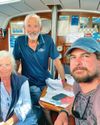
Sail the Atlantic with strangers
Would you sail across the Atlantic with someone you've just met? Ali Wood meets the cruising crews who've done just that

IZIBoat: simple sailing
Rupert Holmes sails an innovative catamaran design intended to widen participation in sailing among those with little time to get on the water in more conventional craft
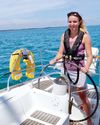
30 WAYS TO GET AFLOAT
From tall ships to small dinghies, you needn't own a boat to sail. Ali Wood looks at the options, and how skippers can also find crew
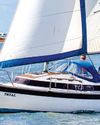
Boats for restoring under £20,000
Duncan Kent picks the best sub-35ft sail and power boats to look for when aiming to undertake a restoration on a budget
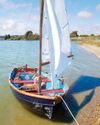
Seaworthy dinghies for less than £500
For low cost traditionally-styled GRP trailer-sailers, consider the Foreland and the Otter available at bargain basement prices
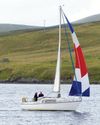
Playing with coloured sails
Maintaining an hourglass-shaped balloon and ratcheting up the log numbers